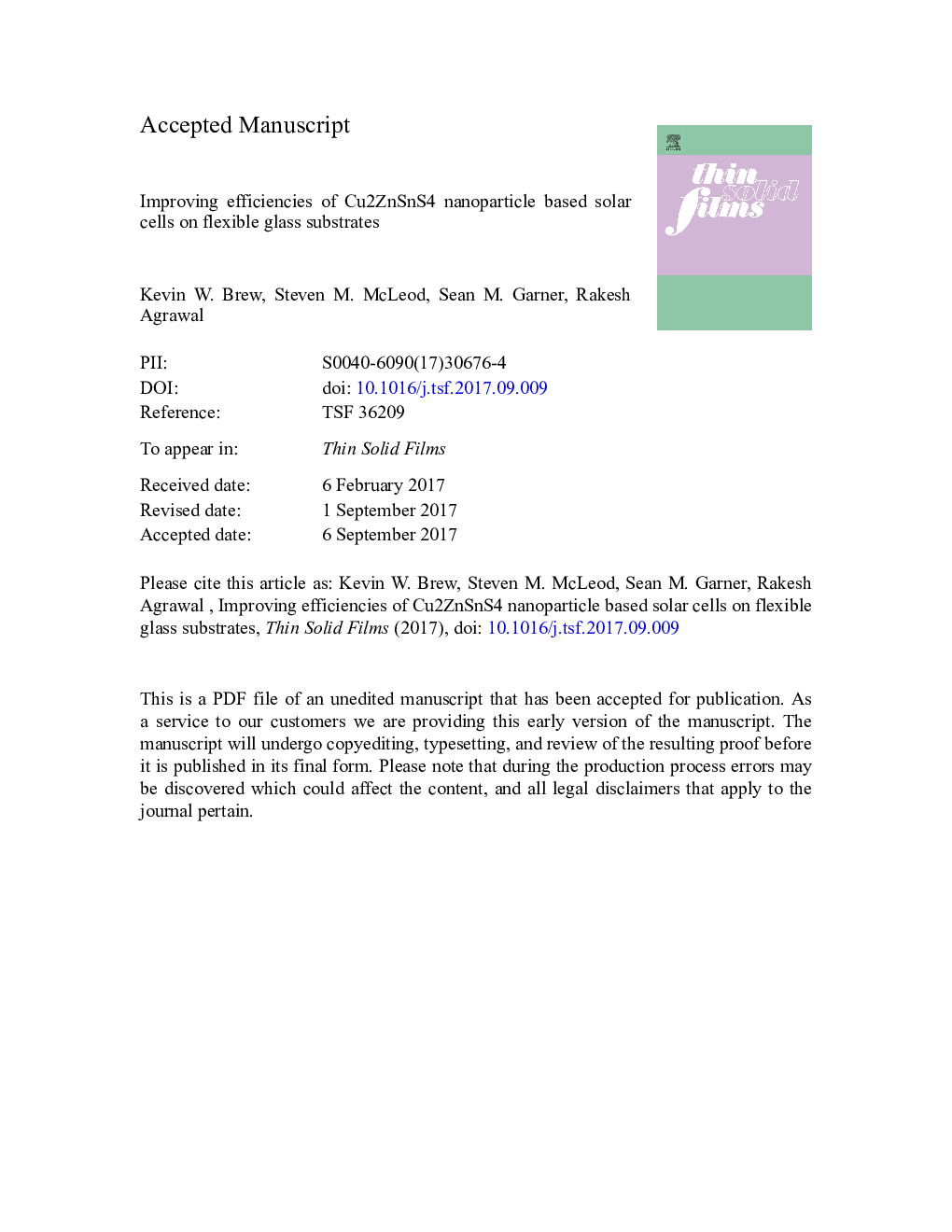| Article ID | Journal | Published Year | Pages | File Type |
|---|---|---|---|---|
| 5465755 | Thin Solid Films | 2017 | 26 Pages |
Abstract
Since the sodium concentration in Willow Glass is negligibly small, supply of sodium to the absorber film during selenization was explored. Soaking coated CZTS films in sodium chloride prior to selenization was found to have a detrimental effect on power conversion efficiency (PCE). Alternatively, sodium doping with a thin NaF film on top of the CZTS nanoparticles films prior to selenization resulted in slightly improved device performance. The addition of a 10 nm thick NaF layer slightly increased the average device efficiency from 6.2 ± 0.3% to 6.4 ± 0.4% with a record 6.9% PCE based on total cell area. The increased efficiency results from higher Voc due to the sodium doping. While these initial results demonstrate the potential of Willow Glass as a flexible support for nanoparticle based photovoltaic devices, there is a need to continue developing improved processing methods to further enhance PCE values.
Related Topics
Physical Sciences and Engineering
Materials Science
Nanotechnology
Authors
Kevin W. Brew, Steven M. McLeod, Sean M. Garner, Rakesh Agrawal,
